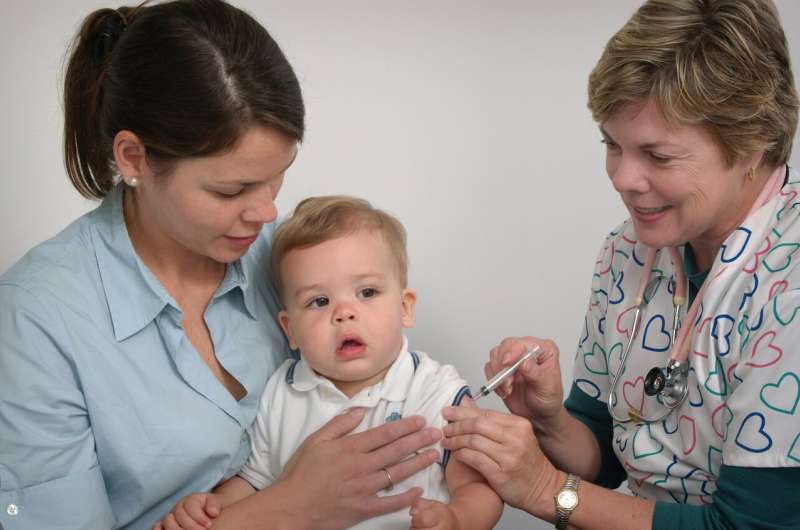
A new tool to identify infants most at risk for severe respiratory syncytial virus (RSV) illness could aid pediatricians in prioritizing children under age 1 to receive a preventive medication before RSV season (October-April), according to Vanderbilt University Medical Center (VUMC) research published in Open Forum Infectious Diseases and to be presented at the American Thoracic Society 2024 International Conference.
Study authors considered factors including birth month, birth weight and whether an infant has siblings to determine who is most at risk of severe RSV illness and could benefit from the medication nirsevimab, commonly used as a preventive in newborns.
“We developed a tool to identify babies at highest risk for a severe infection due to RSV,” said the study’s presenter Ferdinand Cacho, MD, pediatric pulmonology fellow in the Center for Asthma Research at VUMC.
“RSV is a common respiratory infection that can cause fever, cough, runny nose, and difficulty breathing. In some babies, the infection can be so severe they need to be admitted to the hospital and be in the intensive care unit,” he said.
The Centers for Disease Control & Prevention recommends early immunization with nirsevimab for all infants, but a shortage in October 2023 made it necessary to prioritize for high-risk infants who weren’t eligible for immunization with a different agent known as palivizumab.
Nirsevimab is long-acting drug and only requires one dose while palivizumab is short-acting, requires monthly injections during RSV season, and is restricted to use in a subset of high-risk infants. Both medications are monoclonal antibodies used to prevent RSV lower respiratory tract infection in newborns and young children.
“Timely identification of infants at highest risk of RSV-related morbidity is key to prevention,” said lead author Brittney Snyder, Ph.D., research assistant professor in the Division of Allergy, Pulmonary and Critical Care Medicine at VUMC.
“Our personalized risk prediction tool may have applications in allocating expensive and/or limited immunoprophylaxis (immunization with nirsevimab or palivizumab) to achieve the greatest benefit and in promoting RSV prevention among families with high-risk infants,” she said.
Snyder and colleagues researched de-identified patient records of nearly 430,000 children insured by the Tennessee Medicaid Program, including infants who did not receive RSV immunoprophylaxis in the first year of life.
Among 429,365 infants in the study, 713 had severe RSV LRTI requiring ICU admission. The tool (equation) had good predictive accuracy and internal validation that indicated a good fit, the authors reported.
“Our tool was validated in a population of approximately 430,000 babies insured by the Tennessee Medicaid program, so our next step is to validate this tool in other populations, such as a U.S.-wide study and in international populations,” Cacho said. “This tool can help providers, health care institutions, and policymakers prioritize a limited resource so that the most vulnerable babies receive it.”
More information:
Brittney M Snyder et al, Personalized Infant Risk Prediction for Severe Respiratory Syncytial Virus Lower Respiratory Tract Infection Requiring Intensive Care Unit Admission, Open Forum Infectious Diseases (2024). DOI: 10.1093/ofid/ofae077
Citation:
New tool helps identify babies at high risk for RSV (2024, April 25)
tool-babies-high-rsv.html
.
. The content is provided for information purposes only.
